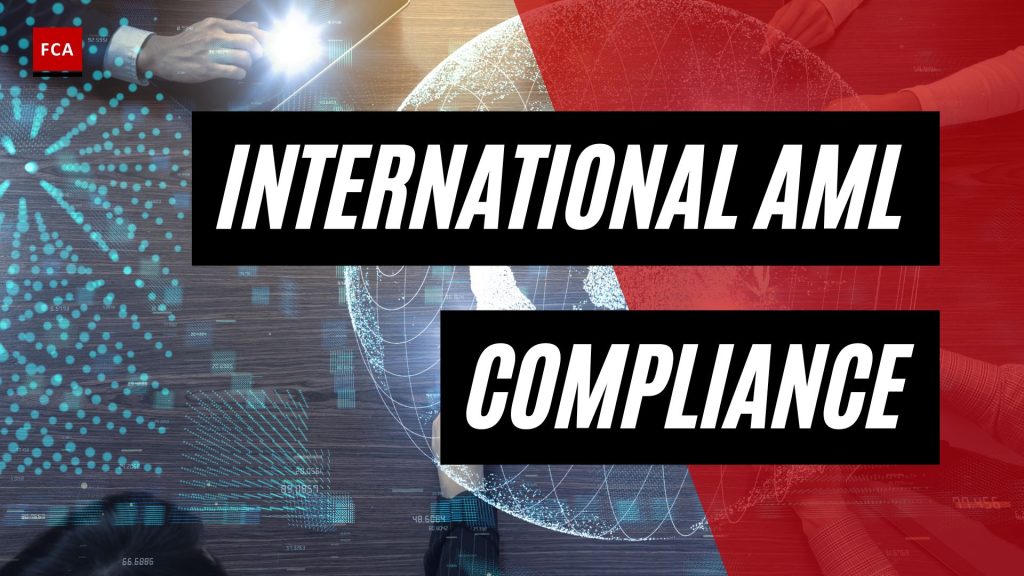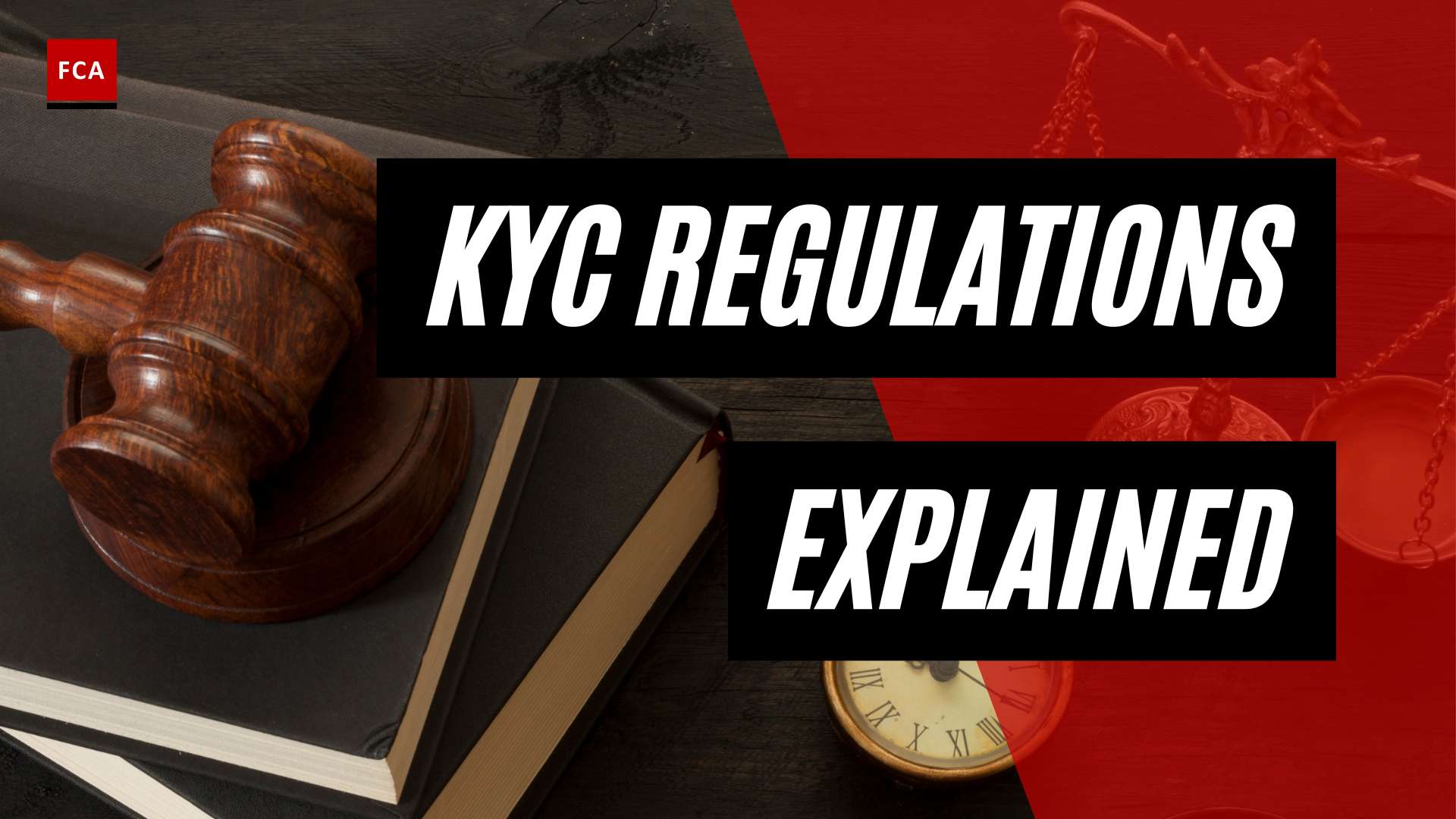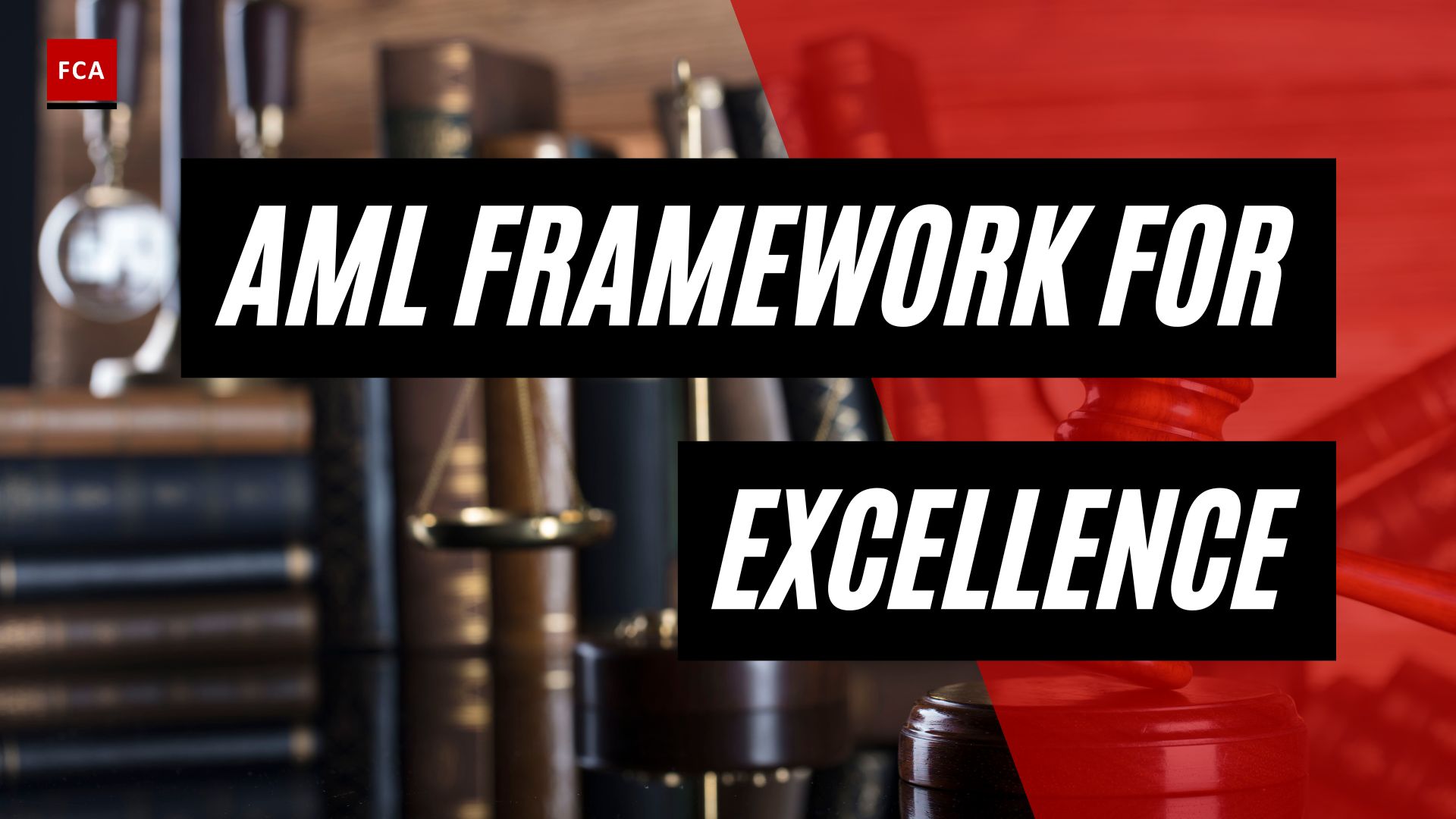International AML Compliance
To protect the integrity of the global financial system and prevent illicit financial activities, international Anti-Money Laundering (AML) compliance measures play a crucial role. These measures are designed to detect, prevent, and restrain illegal financial activities that can threaten economic stability and national security.
Overview of AML Compliance
AML compliance refers to the set of regulations and procedures implemented by governments, financial institutions, and international organizations to combat money laundering and terrorism financing. Money laundering involves disguising the origins of illicit funds to make them appear legitimate, while terrorism financing provides financial support to terrorist activities. Both activities have far-reaching consequences, making AML compliance a global priority.
The objective of AML compliance is to deter, detect, and report suspicious transactions, thereby disrupting the flow of illicit funds. AML compliance frameworks typically include processes such as customer due diligence, transaction monitoring, record-keeping, and reporting of suspicious activities. These measures help identify and mitigate the risks associated with money laundering and terrorism financing.
Importance of Cross-Border AML Regulations
Money laundering and terrorism financing are not confined by geographical boundaries. Criminals and terrorists often exploit the interconnectedness of global financial systems to move funds across borders. As a result, cross-border AML regulations are crucial in preventing and detecting illicit financial activities.
Cross-border AML regulations establish guidelines and requirements for financial institutions operating internationally to ensure compliance with AML measures. These regulations address issues such as cross-border money laundering laws, AML reporting requirements, risk assessment, due diligence, training programs, and monitoring mechanisms.
International collaboration is essential in AML efforts due to the transnational nature of money laundering and terrorism financing. Close cooperation between countries allows for the exchange of information, intelligence, and best practices to effectively target investigations and disrupt criminal networks. Organizations like the Financial Action Task Force (FATF) play a critical role in setting global AML compliance standards and promoting regulatory cooperation.
By enhancing cross-border AML regulations, countries can align their frameworks, close regulatory gaps, and ensure consistent implementation of preventive measures. This alignment helps reduce opportunities for criminals and terrorists to exploit jurisdictional disparities and weak enforcement mechanisms. Strengthening international collaboration in AML efforts is crucial for maintaining the integrity of the global financial system and safeguarding national security.
In the next sections, we will explore the challenges in cross-border AML compliance, strategies to strengthen compliance, best practices, and the future of cross-border AML compliance. Stay tuned for more insights on this important topic.
Challenges in Cross-Border AML Compliance
Ensuring effective cross-border AML compliance poses several challenges for financial institutions and regulatory authorities. These challenges stem from the complexity of international regulations, the lack of cooperation and information sharing, and the need to manage multi-jurisdictional compliance.
Complexity of International Regulations
The landscape of anti-money laundering (AML) regulations varies across different jurisdictions, making it challenging for organizations to navigate and comply with the diverse requirements. Financial institutions operating across borders must grapple with the intricacies of complying with different AML regulations in different locations. This complexity necessitates increased efforts in customer due diligence and monitoring to ensure compliance across the organization. It also requires organizations to stay updated with evolving regulations and adapt their compliance programs accordingly.
Lack of Cooperation and Information Sharing
Effective AML efforts rely on cooperation and information sharing between financial institutions and regulatory authorities. However, there are challenges in achieving seamless collaboration due to concerns about legal liabilities and reputational risks. Financial institutions may be hesitant to share information due to these concerns, while regulatory authorities might lack the resources or expertise to analyze the data provided by financial institutions. This lack of cooperation and information sharing hampers AML efforts, as it impedes the identification and prevention of illicit financial activities. To address this challenge, stakeholders need to foster a culture of collaboration and establish mechanisms to encourage effective information sharing while addressing concerns about confidentiality and legal implications.
Managing Multi-Jurisdictional Compliance
Financial institutions operating in multiple jurisdictions face the complexity of managing AML compliance across different legal frameworks. Each jurisdiction may have its own set of regulations, reporting requirements, and risk assessment methodologies. Ensuring consistency and effectiveness in compliance across the organization becomes increasingly challenging due to these variations. Financial institutions need to establish robust systems and processes that can accommodate the diverse regulatory landscape. This includes implementing sophisticated cross-border AML monitoring systems and adopting risk-based approaches that take into account the specific AML requirements of each jurisdiction.
To address these challenges, financial institutions should leverage technology to streamline their AML compliance efforts. By incorporating advanced tools and solutions, such as artificial intelligence and machine learning, financial institutions can enhance their monitoring capabilities, improve risk assessment, and automate compliance processes. Additionally, they should invest in comprehensive training programs to enhance the knowledge and skills of their compliance teams.
Collaboration at the international level also plays a crucial role in strengthening AML compliance. Organizations like the Financial Action Task Force (FATF) lead the way by establishing global AML compliance standards and promoting regulatory cooperation. Through international collaboration and information exchange, countries can align their frameworks, enhance the effectiveness of AML measures, and close regulatory gaps.
By addressing the challenges of cross-border AML compliance, financial institutions and regulatory authorities can work together to create a robust and resilient global AML framework that effectively combats money laundering and other financial crimes.
Strengthening Cross-Border AML Compliance
To effectively combat money laundering and meet the challenges posed by cross-border transactions, financial institutions and regulatory bodies are turning to technology to strengthen their AML compliance efforts. Leveraging technology in AML workflows has become essential in enhancing the identification and analysis of potential money laundering activities, streamlining processes, and improving overall compliance standards.
Leveraging Technology in AML Workflows
Traditional AML compliance methods are often time-consuming, labor-intensive, and prone to human error. They can no longer keep pace with the sophisticated tactics employed by money launderers and financial criminals FlagRight. By integrating technology into AML workflows, financial institutions can significantly enhance their ability to identify and analyze potential money laundering activities more accurately and efficiently.
Technology-driven AML compliance reduces operational costs and resources for financial institutions, improves compliance standards, and empowers institutions to stay ahead of emerging threats in money laundering by adapting quickly to new patterns and tactics employed by financial criminals FlagRight. Let’s explore some key technological advancements in AML compliance workflows.
Role of Artificial Intelligence and Machine Learning
Artificial Intelligence (AI) and Machine Learning (ML) play a crucial role in strengthening cross-border AML compliance. These technologies enable financial institutions to analyze vast amounts of data, identify patterns, and detect suspicious activities with greater accuracy and speed Tookitaki. The power and value of AI and ML in identifying and preventing money laundering across international transactions are becoming increasingly evident.
AI and ML technologies can automate routine tasks, improve transaction monitoring, streamline customer due diligence, and enhance the accuracy of risk assessment processes NorthRow. By leveraging explainable AI models, financial institutions can gain deeper insights into suspicious activities and strengthen their ability to prevent money laundering.
Benefits of Robotic Process Automation
Robotic Process Automation (RPA) is another technology that is revolutionizing AML workflows. RPA enables the automation of repetitive and rule-based tasks, such as data entry, report generation, and compliance checks. By implementing RPA, financial institutions can free up valuable resources, reduce human error, and improve operational efficiency FlagRight.
The benefits of RPA in AML compliance include faster processing times, increased accuracy in transaction monitoring, and improved regulatory compliance. By automating these tasks, financial institutions can focus their efforts on more complex analysis and investigation, enhancing their ability to detect and prevent money laundering activities.
By leveraging technology, financial institutions can enhance their cross-border AML compliance efforts, streamline processes, and adapt quickly to evolving money laundering threats. It is crucial for institutions to invest in AI, ML, and RPA solutions to improve transaction monitoring, customer due diligence, and compliance with regulatory requirements Unit21. The integration of technology helps financial institutions stay at the forefront of AML compliance and ensure the integrity of the global financial system.
Best Practices for Cross-Border AML Compliance
To ensure effective cross-border AML compliance, financial institutions and organizations must implement best practices that help identify and prevent money laundering activities. Here are three key practices to consider:
Know Your Customer (KYC) Processes
Financial institutions should prioritize Know Your Customer (KYC) processes to verify a customer’s identity and authenticate customer information. KYC procedures involve obtaining relevant identification documents, conducting risk assessments, and monitoring customer transactions to detect any suspicious activity. By implementing robust KYC processes, institutions can establish a strong foundation for cross-border AML compliance (Unit21).
Key components of effective KYC processes include:
- Collecting accurate and up-to-date customer information, including identification documents and proof of address.
- Conducting risk assessments to determine the level of due diligence required for each customer based on their risk profile.
- Performing ongoing monitoring of customer transactions to identify any unusual or suspicious activity.
- Regularly updating customer records to ensure accuracy and compliance with regulatory requirements.
Effective Transaction Monitoring
Monitoring transaction patterns is crucial to detect suspicious activity and potential money laundering. Financial institutions should implement effective transaction monitoring systems to identify high-risk transactions and unusual patterns. This includes monitoring transactions to offshore accounts, small-value transactions to the same account, and regular transfers to risky or sanctioned jurisdictions. By leveraging technology and analytics, institutions can enhance their ability to detect and report suspicious activity more effectively (Unit21).
Key elements of effective transaction monitoring include:
- Utilizing advanced analytics and machine learning algorithms to analyze large volumes of transactional data in real-time.
- Setting up alerts and triggers to identify suspicious transactions based on predefined criteria.
- Conducting investigations and escalating suspicious activity reports to the appropriate authorities in a timely manner.
- Regularly reviewing and updating transaction monitoring processes to adapt to evolving threats and regulatory requirements.
Training and Knowledge Enhancement
To ensure effective cross-border AML compliance, it is essential to train team members and ensure they have a strong understanding of AML laws, regulations, and procedures. Regular training programs and knowledge enhancement initiatives help keep employees updated on emerging trends, new regulations, and best practices in AML compliance. Training should focus on enhancing the ability to identify and respond to transactions and activities linked to money laundering. Additionally, creating a culture of compliance and accountability within the organization is crucial for successful AML efforts (Unit21).
Key aspects of training and knowledge enhancement include:
- Conducting regular AML training programs for employees at all levels of the organization.
- Providing resources and guidance on AML laws, regulations, and industry best practices.
- Encouraging employees to report any suspicious activity or potential AML risks.
- Continuously evaluating and updating training programs to align with changing regulatory requirements.
By incorporating these best practices into their cross-border AML compliance programs, financial institutions can strengthen their ability to detect and prevent money laundering activities. Implementing robust KYC processes, effective transaction monitoring systems, and comprehensive training programs contributes to a more secure and compliant financial ecosystem.
International Collaboration in AML/CFT Efforts
To effectively combat money laundering and terrorist financing, international collaboration plays a crucial role in establishing global standards, promoting regulatory cooperation, and enhancing the effectiveness of anti-money laundering and countering the financing of terrorism (AML/CFT) efforts. Organizations such as the Financial Action Task Force (FATF) are at the forefront of these collaborative efforts.
Role of Financial Action Task Force (FATF)
The Financial Action Task Force (FATF) is an intergovernmental organization that plays a pivotal role in setting international standards and promoting effective implementation of AML/CFT measures. The FATF develops recommendations known as the FATF Recommendations, which serve as the global standard for combating money laundering, terrorist financing, and proliferation financing.
The FATF conducts mutual evaluations and peer reviews to assess countries’ compliance with the FATF Recommendations. These evaluations help identify areas for improvement and provide recommendations to strengthen AML/CFT frameworks at the national level. Additionally, the FATF monitors the progress made by countries to address the identified deficiencies and encourages their remediation.
Enhancing Global Standards and Regulations
International collaboration in AML/CFT efforts enables countries to develop and adopt global standards, best practices, and regulations. This alignment of frameworks helps close regulatory gaps and ensures consistent implementation of preventive measures across jurisdictions. By enhancing global standards and regulations, countries can reduce opportunities for criminals and terrorists to exploit jurisdictional disparities and weak enforcement mechanisms.
Through international cooperation, governments can exchange information and share knowledge on evolving tactics, patterns, and trends associated with illicit financial activities. This continuous flow of information helps target investigations more effectively and disrupt criminal networks involved in money laundering and terrorism financing.
Information Sharing and Intelligence Exchange
Information sharing and intelligence exchange are crucial components of international collaboration in AML/CFT efforts. The transnational nature of money laundering and terrorist financing necessitates continuous and coordinated sharing of information between countries. By exchanging information, countries can gain valuable insights into emerging risks, typologies, and trends, enabling them to strengthen their AML/CFT frameworks and take targeted actions against illicit financial activities.
International collaboration also involves capacity-building initiatives such as training programs, workshops, and resource sharing. These initiatives strengthen the overall AML/CFT framework, promote a level playing field in the fight against financial crime and terrorist activities, and enhance the capabilities of countries to combat money laundering and terrorist financing.
By working together and establishing global standards, promoting regulatory cooperation, and sharing information, countries can strengthen their AML/CFT frameworks and effectively deter and detect illicit financial activities. International collaboration plays a vital role in ensuring the integrity of the global financial system and safeguarding it against money laundering and terrorist financing risks.
Trends and Challenges in AML Compliance
In the ever-evolving landscape of anti-money laundering (AML) compliance, there are several trends and challenges that organizations must navigate to ensure effective cross-border AML compliance.
Rising AML Enforcement and Compliance Fines
One prominent trend in AML compliance is the increasing focus on enforcement and the imposition of significant fines for non-compliance. In 2022 alone, AML fines globally amounted to a staggering $5.6 billion, with the United States issuing the highest fines at $1.6 billion (NorthRow). Financial institutions across the globe are facing heightened scrutiny, with regions such as Asia, Europe, and the Middle East intensifying their enforcement actions against money laundering activities (NorthRow).
To avoid substantial financial penalties and reputational damage, organizations must prioritize robust AML compliance programs, ensuring adherence to cross-border money laundering laws and reporting requirements. By implementing comprehensive cross-border AML monitoring and due diligence processes, financial institutions can mitigate the risk of non-compliance and protect themselves from enforcement actions.
Complex Regulatory Landscape
Another significant challenge in cross-border AML compliance is the complexity of the regulatory landscape. AML regulations vary across jurisdictions, making it challenging for organizations to maintain consistent compliance standards. Financial institutions operating in multiple jurisdictions must navigate the intricacies of each region’s AML requirements, including risk assessments, reporting obligations, and customer due diligence (Tookitaki).
To address this challenge, organizations should invest in comprehensive cross-border AML risk assessment frameworks and stay updated on global AML compliance standards. By conducting thorough risk assessments, financial institutions can identify and mitigate potential vulnerabilities in their operations, ensuring compliance with the diverse regulatory requirements of each jurisdiction.
Role of Technology in AML Compliance
Technology plays a crucial role in modern AML compliance efforts. Financial institutions are increasingly leveraging innovative solutions to enhance their AML workflows and strengthen their compliance programs. Artificial intelligence (AI) and machine learning (ML) algorithms are being utilized to improve transaction monitoring, identify suspicious patterns, and enhance the effectiveness of AML processes (Tookitaki). Robotic process automation (RPA) is also being employed to automate manual tasks and streamline AML operations, reducing the risk of human error and increasing efficiency (NorthRow).
By embracing technology-driven solutions, financial institutions can stay ahead of the evolving regulatory environment and achieve better detection and prevention of money laundering activities. However, it’s important to note that technology should complement, rather than replace, human expertise. Adequate training and knowledge enhancement programs are essential to ensure that compliance professionals understand the nuances of AML regulations and can effectively leverage technology in their AML compliance efforts.
In summary, the trends and challenges in cross-border AML compliance highlight the need for financial institutions to prioritize robust compliance programs, navigate complex regulatory landscapes, and leverage technology to enhance their AML workflows. By staying abreast of emerging trends, organizations can adapt to the evolving regulatory environment and strengthen their cross-border AML compliance efforts.
The Future of Cross-Border AML Compliance
As cross-border transactions continue to increase, the future of cross-border AML compliance requires constant adaptation to evolving regulatory environments. Financial institutions and compliance professionals must stay ahead of emerging threats in money laundering by leveraging innovative technologies, strengthening compliance programs, and ensuring adherence to global AML standards.
Innovations in AML Technology
The integration of technology, such as artificial intelligence (AI), machine learning (ML), and robotic process automation (RPA), has revolutionized AML workflows. These advancements enhance the ability to identify and analyze potential money laundering activities more accurately and at a fraction of the time required by traditional methods (FlagRight).
Technology-driven AML compliance significantly reduces operational costs and resources for financial institutions. It improves compliance standards and empowers institutions to stay ahead of emerging threats by adapting quickly to new patterns and tactics employed by financial criminals (FlagRight).
Some key technological innovations in AML compliance include:
- Automating routine tasks to streamline processes and improve efficiency.
- Enabling faster and more accurate transaction monitoring.
- Leveraging data analytics and big data for deeper insights into potential risks.
- Facilitating regulatory compliance through Regtech solutions.
By harnessing the power of technology, financial institutions can enhance their AML capabilities and contribute to a more robust global AML compliance framework.
Adapting to Evolving Regulatory Environment
As regulatory environments continue to evolve, financial institutions need to adapt to new and more stringent requirements. Adherence to global AML standards is crucial to maintaining integrity in cross-border transactions.
The use of artificial intelligence (AI) and machine learning (ML) technologies has become crucial in AML compliance processes. These technologies enable financial institutions to enhance their capabilities in detecting and preventing money laundering activities (NorthRow).
To ensure compliance with evolving regulations, financial institutions must stay informed about changes in cross-border AML regulations, cross-border money laundering laws, and cross-border AML reporting requirements. This knowledge allows institutions to update their compliance programs accordingly and implement effective risk assessment and due diligence procedures (NorthRow).
Strengthening Compliance Programs
In the future, financial institutions must focus on strengthening their AML compliance programs to achieve better detection and prevention of money laundering activities. This involves leveraging innovative technologies and implementing comprehensive training programs to ensure staff members are up to date with the latest AML regulations and best practices.
By investing in robust compliance programs, financial institutions can enhance their ability to identify and mitigate risks, protect their reputation, and contribute to global efforts in combating money laundering.
To stay ahead in the future of cross-border AML compliance, financial institutions must embrace technological innovations, adapt to evolving regulatory environments, and continually strengthen their compliance programs. By doing so, they can ensure global integrity and contribute to the fight against money laundering and other illicit financial activities.








